HexClad is a hybrid cookware that combines the benefits of nonstick and stainless steel cookware. It has a true nonstick surface that is more durable than most nonstick cookware and can resist the wear and tear of utensils, even metal ones. Also, this cookware conducts and retains heat as well as some of the more established brands on the market.
This is the concise information. However, to get a detailed Hexclad cookware review and other relevant factors, continue reading the full article.
Key Takeaways
- HexClad cookware comes with a hybrid design that is more durable than most non-stick cookware.
- HexClad cooks more like non-stick cookware, but since the surface isn’t completely smooth.
- This cookware is also designed to resist wear and tear from utensils, even metal ones,
- If you’re looking for cookware that heats fast and evenly, boasts excellent heat retention, and is easy to clean and use, HexClad checks those boxes.
Hexclad Cookware: A Quick Review
Let’s take a look at some of the key features of Hexclad pans, pots, and woks.
| Product Type | Features | Price |
| Hexclad Pans | Hybrid design Non-toxic coating Comfortable handle | Check Latest Price |
| Hexclad Pots | The hexagonal pattern Induction compatible Scratch-resistant | Check Latest Price |
| Hexclad Woks | Suitable for high-volume cooking Stay-cool handle | Check Latest Price |
Still, deciding on whether you should use Hexclad cookware? Don’t worry. Our detailed sections below will have all the answers you’re looking for.
Hexclad Cookware: A Detailed Review
Read this article to learn about all the unique features of the Hexclad Pans, pots, and woks for your cooking journey.
Hexclad Pans:
The HexClad pan features a unique hybrid design that supports versatile cooking.
Pros:
Hexclad Pans include unique benefits:
- Hybrid design that combines stainless steel and non-stick technology
- A comfortable handle, a grooved lip for drip-free pouring, and shallow sides for excellent evaporation
- A good amount of flat cooking surface
- Suitable for multiple tasks, making them an excellent all-purpose pan
- Support induction, gas, ceramic, and electric stovetops
Cons:
Hexclad Pans come with their own set of drawbacks:
- Expensive than other products
- Not fully non-stick
- Contain PTFE
- Hard to clean because of the nooks and crannies in the design
- Not usable at any heat setting, as using high heat can damage the non-stick surface
Why Should You Use Hexclad Pans?
HexClad pans are a good choice for those who want a durable and versatile pan that can last longer than traditional non-stick pans.
These pans are also designed to resist wear and tear from utensils, even metal ones, which can deteriorate a non-stick pan over time.
Hexclad pans are also praised for their durability and reliability, making them a favorite among Michelin-star chefs. Overall, HexClad pans are a good investment for those who want a versatile and durable pan that can last longer than traditional non-stick pans.
Hexclad Pots:
HexClad pots combine the durability of stainless steel with a hexagonal non-stick interior, making them perfect for a variety of dishes.
Pros:
These are the positive sides of the Hexclad Pots:
- Unique hexagonal design
- Offers better non-stick performance than stainless steel alone.
- More durable than traditional non-stick pans
- Can resist the wear and tear of utensils, even metal ones.
- Distributes heat evenly across the surface of the pan.
- An ergonomic handle
- Scratch-resistant
- Induction compatible
- Tackles even the most demanding cooking tasks.
Cons;
These are the negatives of Hexclad Pots:
- May not be affordable for everyone
- Not fully non-stick
- May not be as durable as clad stainless steel
Why Should You Use Hexclad Pots?
The unique hexagonal design of these pots allows you to use metal utensils without scratching the non-stick coating.
Also, these pots are made with high-quality materials that are designed to last. They are more durable than most ceramic and Teflon-coated nonstick pans
HexClad pots distribute heat evenly across the surface of the pan. In addition, these pots retain heat well, similar to cast iron.
Hexclad Woks:
The HexClad wok boasts unique features and can be an ideal choice for high-volume cooking.
Pros:
These are the qualities that make Hexclad Woks an excellent choice:
- Excellent heat conduction and retention
- Suitable for high-volume cooking
- Stylish design
- Non-stick
- Oven-safe
- Dishwasher-safe
- Stay-cool handle
Cons:
Hexclad Woks have some setbacks as well:
- Heavier than other normal tri-ply-clad cookware
- Not fully non-stick
- Not suitable for budget-friendly purchase
- Contains PTFE
Why Should You Choose Hexclad Woks?
HexClad woks have excellent heat conduction and retention, making them suitable for searing and releasing food better than stainless steel.
The high walls of the wok keep heat from evaporating as quickly, so you can get that desirable golden-brown sear in even less time.
HexClad woks have a sleek and modern design, and the laser-etched lattice pattern is both stylish and practical.
Also, the shape and depth of the wok make it a great option for one-pot meals for the nights you need something low effort and easy to clean.
What is HexClad Cookware?
Hexclad Cookware was founded in 2016 by CEO Daniel Winer. Usually, it is a stainless steel pan. It also has a frying pan.
With its eye-catching hexagonal lattice on both the inner and exterior of the pans, Winer’s hybrid design—half nonstick, partly coated stainless—represents a breakthrough in the HexClad cookware sector.
Hexclad cookware is the original, albeit there are a few comparable items on the market right now.
Hexclad cookware employs both nonstick technology and clad stainless steel in what they refer to as a “hybrid” design. The pans are made of standard tri-ply-clad stainless steel and have an interior made of aluminum for quick, even heating (see more on our performance testing below).
After that, they add a nonstick coating and cover it with a laser-etched stainless steel lattice. HexClad gets its name from the lattice, which consists of thousands of tiny hexagonal pieces.
The stainless steel is referred to as the “peaks” and the nonstick coating is referred to as the “valleys” in the HexClad cookware website’s description of this lattice. While still offering the advantages of a nonstick pan, the slightly projecting stainless steel shields the nonstick coating from harm.
On the outside of their pans, HexClad cookware also uses a stainless steel lattice and nonstick coating. The pans are stunningly gorgeous, so this is probably just for show, but it makes the pans easy to clean and scratch-resistant on the inside as well as the outside.
Although it is a fresh design, the concept is not wholly original. For the same reasons, other nonstick manufacturers add reinforcements like granite, titanium, and diamond dust to their coatings to increase their toughness: the reinforcement material sticks out above the nonstick coating to shield it.
But as far as we are aware, HexClad is the first to really apply a latticed stainless steel protective layer over a nonstick coating.
It looks amazing and is innovative. But is it actually effective?
Let’s investigate.
Comparison of HexClad, Tri-Ply, and Standard Nonstick
We compared HexClad cookware to tri-ply clad steel and PTFE (Teflon) nonstick skillets to get a broad notion of its performance.
HexClad cookware pricing is comparable to All-Clad D3 prices, so we felt this would be a decent comparison.
The data provided here should be similar for other clad stainless and nonstick brands of equal quality, but we used the data for All-Clad D3 tri-ply and All-Clad HA1 nonstick.
Tri-ply nonstick, which could appear like a more accurate comparison in terms of price, was left out because we don’t suggest buying it; cast aluminum pans are more affordable and maintain heat just as well; therefore we believe that they are the practical option given how brittle nonstick coatings can be.
Does HexClad Cookware Work Well?
If you want stainless steel cookware that can withstand high temperatures, HexClad cookware is the finest option.
These pans can resist temperatures of up to 500 degrees Fahrenheit, and unless you place the handles very up to a flame, they won’t even get warm.
Anyone can use them because they are dishwasher-safe, attractive, and lightweight. Additionally, they may be used with any type of burner, including induction, gas, ceramic, and more!
Is Higher Temperature More Effective?
You won’t need to cook at a higher temperature than you normally would while using these pans.
When using HexClad Hybrid Cookware, keep in mind to cook at a lower temperature than usual because they are excellent at spreading heat to all parts of the pan.
Despite the fact that this pan is regarded as nonstick, you still need to season it with some oil before using it for the first time. Additionally, it is advised to use oil while preparing vegetables or other foods that do not naturally contain fat.
This is due to the nonstick coating not completely covering the pan’s surface, which prevents it from performing as well as typical nonstick pans.
What is Hexclad Cookware Made Of?
Hexclad claims that while its nonstick coating is ceramic, it does contain PTFE (you can read more about that on the HexClad website.).
We believe it to be a hybrid nonstick coating similar to the one utilized by ScanPan. Companies may keep their nonstick coatings a secret because they view them as proprietary knowledge.
The good news is that PFAS, the chemical family of perfluorinated compounds to which PFOA and the new GenX, which has replaced the now outlawed PFOA in some nonstick coatings, belong, are absent from the HexClad nonstick coating. It’s fantastic that HexClad does not use these unsavory, carcinogenic chemicals in the production of its cookware.
Unfortunately, they don’t specify what they use in its place, so we can’t say for sure whether the nonstick coating is safe for people or the environment. In fact, whatever they’re using is probably identical to PFAS.
Does HexClad Have Harmful Chemicals?
These kinds of pans include PTFE, a chemically inert and nontoxic material. This is also utilized in body-implanted cardiac stents and dental implants.
HexClad does not make use of PFOA or any other chemicals, including fabric protectors used by other brands, to shield the surface of their nonstick coatings.
Between the stainless steel, there is aluminum as well, making it safe for all stovetops. A constant temperature is all that is necessary.
However, the cookware starts to break down once you start getting temperatures exceeding 500 degrees Fahrenheit.
This condition, known as polymer fume fever, can be fatal to animals such as pets and birds and give humans flu-like symptoms. It is extremely unusual to result in a situation that could be life-threatening, although symptoms typically appear after a few days of inhaling a low quantity of the fumes.
However, nonstick cookware without PTFE is not designed to withstand extended usage.
HexClad tested the largest pan, and it endured 45 minutes of continuous use. There are a few other “green” brands that make cookware without PTFE or PFOA, but customers have complained that they will constantly need to replace their pans after prolonged use.
It is Compatible with Diamond Dust Technology?
Diamond dust is added to the highest-grade Japanese ceramic non-stick coatings to boost durability. This layout produces steady, even warmth.
Due to the aluminum core’s excellent heat conductivity and ability to keep the pan lightweight, this tri-ply construction was chosen.
However, as it will react with acidic foods, stainless steel is put on top to prevent this.
All-Clad created the initial version of this design, and they owned the patent until it expired. The fact that most significant cookware manufacturers still produce and utilize some variation of this design demonstrates how excellent it is.
Inside the pan, there are a lot of valleys and peaks. This keeps the food cooked consistently and avoids sticking.
The valleys are comprised of nonstick ceramic coatings, while the peaks are made of metal. Additionally, the etching on the pan avoids hot spots, ensuring that all heat is dispersed equally. Additionally, it facilitates sautéing and searing the meal.
In the pans, diamond dust is employed. It is layered in a way that will make it more durable and give the pan a blue sheen. Performance is more important than appearance, but even so, the pan is incredibly fashionable and lovely.
Wide and low sides on the skillet’s base encourage the evaporation of fluids and make moving food simpler.
Where Is Hexclad Cookware Made?
Products for HexClad are currently being created at their Los Angeles office. Then, they bring all the items to Asia to produce the pans.
The facility there has the specialized knowledge required by this company to produce the ideal, patented laser etching on the pans. We do not know exactly who the manufacturer is, so it might be China.
Features of Hexclad Cookware
The common features of Hexclad Cookware are described below.
Metal-Utensil Design:
The 6-sided, laser-etched hexagonal design of HexClad Hybrid Cookware is unusual and fully safe with an abrasion-resistant nonstick surface.
The pan is made of three layers: magnetic stainless steel on top, aluminum in the middle, and steel on the bottom. This construction allows it to function on any type of burner.
Handles:
The size and form of HexClad handles are absolutely perfect. When a pan feels wonderful in your hands, you’ll undoubtedly use it more frequently. It’s the ideal design for comfort.
The handle is robust and rounded but not excessively lengthy, making it ideal for hands of all sizes.
The handle is made entirely of stainless steel and has a base heat choke. This keeps it cool and raises the temperature at which it can safely be baked. In contrast to plastic handles, metal handles will heat up if you do put the pan in the oven. To remove the pan, be sure to put on some sort of glove.
Even when using high heat, the handles have an angled, ergonomic shape and remain cool. Heat transfer is reduced by the pronounced A-shaped space between the riveted connection and the remainder of the handle.
Interior:
The HexClad cookware’s inside is the center of attention. Not only does it have a cutting-edge hybrid stainless steel and non-stick design, but it also simply has an unusual appearance compared to what we are used to seeing.
The stainless steel flared rims are ideal for dripping liquid or pouring sauces.
You can see a herringbone pattern of this hybrid design running along the border of the interior, just under the rim.
From the center of the pan to the rim, you get a mix of stainless and non-stick.
The remainder of the pan features a series of laser-etched hexagons. It may just seem like a cool design, but it’s much more.
Each hexagon’s stainless steel edges are elevated, while the non-stick coating is recessed. The non-stick coating below is shielded by the elevated steel, which comes into contact with food and cooking tools first.
Exterior:
The exterior of the pan combines the hybrid pattern of the cooking surface with the beauty of stainless steel.
In addition to having a beautiful profile, it is also simpler to clean than a pan with a stainless steel exterior if food or dirt spills on it.
Performance:
HexClad ticks all the boxes for the Hexclad cookware that you’re searching for, including quick and even heating, good heat retention, and simplicity of use and cleaning. But it’s not flawless.
To give you a realistic idea of what to anticipate, I’ll go over the benefits and drawbacks of HexClad cookware’s performance in this section.
Versatility:
This pan works with ceramic, induction, gas, and electric stoves.
Additionally, it is made to go from the cooktop to an oven with a maximum temperature of 500 °F. The pan is also fashionable enough to use for serving.
Heat Conduction and Retention:
The combination of the fully clad construction and the innovative hybrid surface delivers quick, even heating.
Low, medium, and medium-high temperatures are where the aluminum core excels. You wouldn’t use a pan with high heat for this. In addition to encouraging sticking, using high heat might damage the non-stick surface.
A little heat goes a long way in these pans.
I performed a quick test to evaluate how HexClad stacks up against the opposition in terms of heat conduction.
I filled pans from HexClad, All-Clad, Calphalon, Misen, and several more brands with two cups of cold water.
I then set each pan on a burner of the same size and increased the heat. I wanted to see which pan could boil the water the fastest. Although it was close, the HexClad pan was one of the first to boil. Only Made In, Misen and Anolon pan-boiled water faster than HexClad.
I turn off the heat and set each pan on the counter after it comes to a boil. Water in the HexClad pan had a temperature of 120.7 °F after five minutes and 102.4 °F after ten. HexClad’s heat retention is above average and better than brands like Calphalon, Hestan, and All-Clad.
How to Clean HexClad Cookware?
HexClad Cookware can be cleaned with the hardest of sponges and is safe to use with any metal utensils without worrying about scratches on either side.
Your HexClad cookware is even covered by a lifetime warranty, so if anything prevents you from using it, the pan will be changed.
With HexClad pans, some discoloration is to be expected; but, if you clean after each use to prevent buildup, the food particles won’t become stuck to the pan’s surface. After the stains have been washed with the abrasive side of a sponge and soaked in soapy water, they should be removed.
Does HexClad Offer Nonstick Cookware Sets?
Yes, you can also purchase nonstick cookware sets from HexClad. If you’re cooking for a large group of people, the 12-inch pan with one lid included in this HexClad Hybrid Nonstick Cookware set is perfect.
Two steaks can be cooked in this pan at once with ease.
The HexClad 8′′ pan is great for cooking individual portions or for cooking vegetables, sauces, and other foods.
Features of HexClad Nonstick Cookware Sets
Below I’m describing the common features of HexClad Nonstick Cookware Sets.
Ideal size:
It’s the ideal size for cooking a single chicken breast or eggs. For cooking meats, fish, and homemade sauce, use the 10′′ pans. In order to prevent an overspill, it also features deep sidewalls.
With the exception of the work, each of these pans has a tempered glass lid to prevent shattering. Each cover features a handle that will remain cool throughout usage and steam vents.
These skillets are fantastic and well worth the cost. The drawback is that since they are nonstick pans, even if you burn something in them, they will still be easy to wash off. However, they will last for a very long period.
Non-Stick Capability:
HexClad pans have nonstick valleys, but the presence of stainless steel can make things tricky. Here are a few things to remember when using this cookware because there will be a learning curve:
- Maintain low to medium heat
- Before using the pan for the first time and as needed after, season it.
- Use an abrasive sponge to deep clean the area occasionally.
- For optimal results, use at least a tablespoon of a high smoke point oil.
The non-stick troughs reduce stickiness but do not entirely eliminate it. As you can see below, eggs will adhere to the pan unless you grease it enough and fry them on medium heat.
Standard non-stick pans provide better release, but HexClad’s hybrid pan performs better than stainless steel alone when it comes to non-stick properties.
Oven Compatibility:
Yes. Around 390 °F, PTFE starts to break down, but it doesn’t start to release harmful gases until it reaches about 590 °F.
Thus, the majority of PTFE cookware can be used in an oven up to 500 °F. However, you should pause before putting your nonstick (or HexClad) pan in a heat source this intensely because PTFE is severely damaged by extreme heat. So, your frying pan is oven-safe!
Price Analysis: HexClad Cookware
Although HexClad has several advantages, some people find the cost to be a considerable deterrent. I’ve tested and reviewed dozens of cookware brands, and this is one of the more expensive ones I’ve encountered.
It is equivalent to and occasionally more expensive than high-end cookware manufacturers like All-Clad and Mauviel. It is much more expensive than practically all other non-stick alternatives available.
Even while the cookware will last longer thanks to the hybrid strategy of covering the non-stick layer with stainless steel, it will eventually deteriorate.
It’s still a sizable commitment, even if you finance your purchase and pay over time through Bread, HexClad’s payment plan partner. The price varies from $40-899.
Downsides of HexClad Utensils
Even though the hybrid method of coating the non-stick layer with stainless steel can help the cookware endure longer, it will eventually degrade.
Even if you finance your purchase and pay over time through Bread, HexClad’s payment plan partner, it’s still a sizeable commitment.
Food sticks are the second-most common issue cited by home cooks. The stainless steel component is to blame for the sticking. To achieve the finest results, you must keep the pan very clean and avoid using high heat. To put it simply, handle it like stainless steel.
Discoloration: HexClad’s steel component becomes stained and needs to be thoroughly scrubbed, just like ordinary stainless steel cookware. The main offenders are little food particles and burned oil. If that occurs, use these techniques to fix your pan.
Not the best option for searing: This is not the best option for searing. You’ll need cast iron or stainless steel for it. But for searing, it’s superior to conventional non-stick. Meat that is fully flat on the cooking surface, enabling the crust to form, is optimal for searing. However, the combination of stainless steel and non-stick coating prevents it from occurring completely.
Heavy: It weighs four pounds, which some people may find heavy for a 12-inch fry pan. For contrast, a 12-inch Scanpan Non-Stick Fry Pan weighs little over three pounds, while a 12.5-inch Hestan Stainless Steel Skillet weighs three pounds and eight ounces.
Unknown track record: HexClad is still an unproven brand at the end of the day. It makes brash claims regarding sturdiness, but only time will be able to confirm their veracity. You’ll be able to determine in a few years whether this novel hybrid architecture is as practical as it seems.
Frequently Asked Questions (FAQs):
Do HexClad Pans Scratch?
Yes, Hexclad pans can get scratched. Sharp utensils may leave a scratch, although metal spoons, whisks, and other tools are acceptable. If this occurs, it will just be cosmetic and have no impact on the cookware’s functionality or safety.
What Does HexClad Cookware’s Warranty Offer?
The lifetime warranty is only valid for issues that affect the pan’s functioning. The only things that HexClad pans do not cover are cosmetic harm, discoloration, or tiny scratches because they have no bearing on how well the pan woks.
Conclusion
The benefits of using these kinds of pans far outweigh the drawbacks. It is a nonstick pan with few dangerous chemicals, has a reasonable price for a large cookware set, and is long-lasting. With these pans, you can cook anything from vegetables to steak.
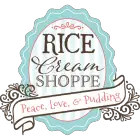
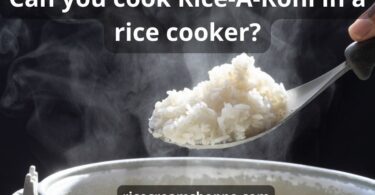
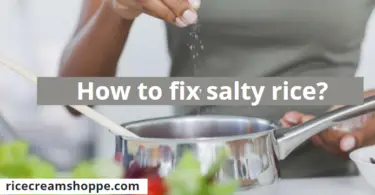
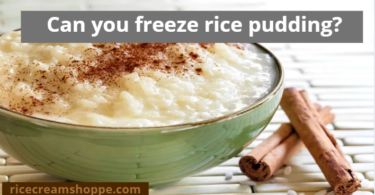
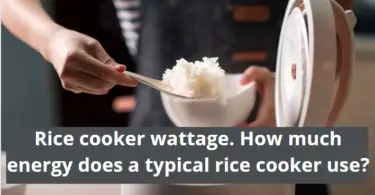
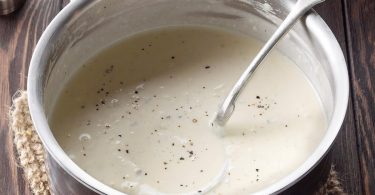
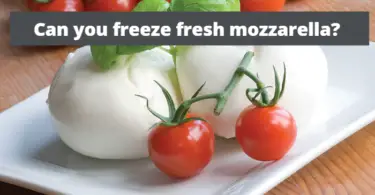

Leave a Comment